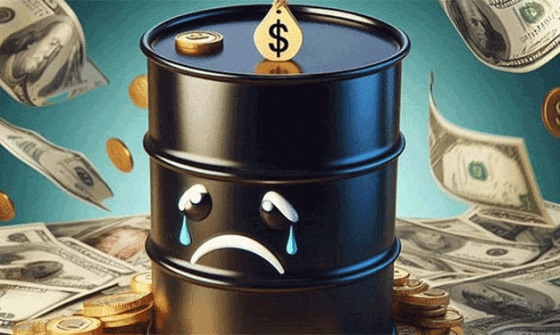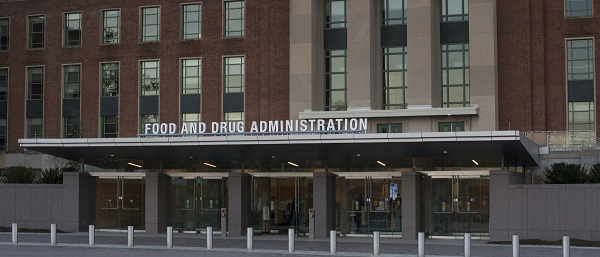Uncategorized
White House defends Trump on Puerto Rico death toll claim

WASHINGTON — As Hurricane Florence bore down on the U.S., President Donald Trump angrily churned up the devastating storm of a year earlier, disputing the official death count from Hurricane Maria and falsely accusing Democrats of inflating the Puerto Rican toll to make him “look as bad as possible.”
Public health experts have estimated that nearly 3,000 perished because of the effects of Maria. But Trump, whose efforts to help the island territory recover have been persistently criticized, was having none of that Thursday. He said just six to 18 people had been reported dead when he visited two weeks after the storm and suggested that many had been added later “if a person died for any reason, like old age.”
Trump’s jarring comments, coming as the East Coast braced for the massive storm, which later made landfall early Friday in North Carolina, offered fresh evidence of his resistance to criticism and his insistence on viewing large and small events through the prism of his own success or failure.
Offering up a fresh conspiracy theory, he said of the Puerto Rico count, “This was done by the Democrats in order to make me look as bad as possible when I was successfully raising Billions of Dollars to help rebuild Puerto Rico.”
Even some Republicans suggested the president had gone too far.
“Casualties don’t make a person look bad,” House Speaker Paul Ryan said, breaking with the president. “So I have no reason to dispute those numbers.”
Sen. Lindsey Graham of South Carolina, who talks to Trump often, said, “I don’t think it’s bad to say we could have done better in Puerto Rico.” He also said he thought Trump “sees every attack on him as sort of undercutting his legitimacy.”
Especially upset were GOP politicians in Florida, a state with a substantial Puerto Rican population.
Gov. Rick Scott, who is running for the U.S. Senate, tweeted: “I’ve been to Puerto Rico 7 times & saw devastation firsthand. The loss of any life is tragic.” A spokesman for former U.S. Rep. Ron DeSantis, who won the Florida GOP primary for governor with Trump’s support, said he did not agree with Trump’s tweets.
The White House defended the president.
“As the President said, every death from Hurricane Maria is a horror. Before, during, and after the two massive hurricanes, the President directed the entire Administration to provide unprecedented support to Puerto Rico,” White House spokesman Hogan Gidley said. “President Trump was responding to the liberal media and the San Juan Mayor who sadly, have tried to exploit the devastation by pushing out a constant stream of misinformation and false accusations.”
Gidley cited studies that attributed fewer than 3,000 deaths on the island to Maria.
Throughout his presidency, Trump has struggled to publicly express empathy at times of national crises, sparking outrage during his post-Maria visit when he feuded with San Juan Mayor Carmen Yulin Cruz and tossed out paper towels to victims like he was shooting baskets. In recent days, Trump publicly lauded his own administration’s response to Maria and privately groused over storm-related news coverage that he saw as overly focused on Puerto Rico, according to two Republican advisers close to the White House who weren’t authorized to speak publicly.
Puerto Rico’s governor last month raised Maria’s official death toll from 64 to 2,975 after an independent study found that the number of people who succumbed in the sweltering aftermath had been severely undercounted. Trump dismissed the findings Thursday, tweeting: “If a person died for any reason, like old age, just add them onto the list.”
In fact, there are two categories of disaster deaths. “Direct” deaths include such fatalities as drownings in a storm surge or being crushed in a wind-toppled building. “Indirect” deaths are harder to count because they can include such things as heart attacks, electrocutions from downed power lines and failure to receive dialysis because the power is out — and those kinds of fatalities can happen after a storm has ended but while an area is struggling to restore electricity, clean water and other health and safety services.
When Trump visited in October 2017, two weeks after the storm hit, the death toll at the time was indeed 16 people. The number was later raised to 64, but the government then commissioned an independent study to determine how many died because of post-storm conditions. That study — conducted by the Milken Institute School of Public Health at George Washington University — estimated 2,975 deaths.
Dr. Carlos Santos-Burgoa — the lead researcher on the study and a well-known expert in global health, particularly Latin America — told The Associated Press that the initial figure of 64 deaths reflected only people whose death certificates cited the storm. He said the latest figure was more accurate and stressed that every death in the six months following the storm was not attributed to the hurricane.
“We are scientists. We are public health people. We are committed to the health of the population. We try to reach the truth, and we try to understand what is damaging the people in order to prevent disease,” he said.
Puerto Rico’s government is run by the New Progressive party, a pro-statehood, Puerto Rico-only party. Gov. Ricardo Rossello told CBS New York on Thursday that he was a Democrat but stressed that the government sought the study and said it “tried to make this process a completely independent process.”
State and local officials are responsible for establishing death tolls, not the federal government. After the total was revised Aug. 28, White House spokeswoman Sarah Huckabee Sanders issued a statement in which she did not actively dispute the revised figure.
Trump’s fresh anger drew swift rebukes from elected officials and residents of the island, where blackouts remain common, 60,000 homes still have makeshift roofs and 13
Cruz, the Democratic San Juan mayor who has sparred with the president, tweeted: “Trump is so vain he thinks this is about him. NO IT IS NOT.” Rep. Luis Gutierrez, an Illinois Democrat who spent part of his youth in Puerto Rico, spoke on the House floor in front of a printout of the Puerto Rican flag, saying Trump is “delusional” and incapable of “empathy or basic human decency.”
Rep. Elijah E. Cummings, ranking Democrat on the House Committee on Oversight and Government Reform, sent a letter to the GOP majority Thursday calling for the panel to request documents from the White House relating to the Puerto Rico response.
Trump maintained as recently as Tuesday that his response to the storm was an “incredible unsung success.”
___
Associated Press reporters Colleen Long, Lauran Neergaard and Alan Fram in Washington, Danica Coto in San Juan, Puerto Rico, Michael Weissenstein in Havana, Cuba, and Jennifer Peltz in New York contributed to this report.
Catherine Lucey, Zeke Miller And Jonathan Lemire, The Associated Press
Uncategorized
Mortgaging Canada’s energy future — the hidden costs of the Carney-Smith pipeline deal


Much of the commentary on the Carney-Smith pipeline Memorandum of Understanding (MOU) has focused on the question of whether or not the proposed pipeline will ever get built.
That’s an important topic, and one that deserves to be examined — whether, as John Robson, of the indispensable Climate Discussion Nexus, predicted, “opposition from the government of British Columbia and aboriginal groups, and the skittishness of the oil industry about investing in a major project in Canada, will kill [the pipeline] dead.”
But I’m going to ask a different question: Would it even be worth building this pipeline on the terms Ottawa is forcing on Alberta? If you squint, the MOU might look like a victory on paper. Ottawa suspends the oil and gas emissions cap, proposes an exemption from the West Coast tanker ban, and lays the groundwork for the construction of one (though only one) million barrels per day pipeline to tidewater.
But in return, Alberta must agree to jack its industrial carbon tax up from $95 to $130 per tonne at a minimum, while committing to tens of billions in carbon capture, utilization, and storage (CCUS) spending, including the $16.5 billion Pathways Alliance megaproject.
Here’s the part none of the project’s boosters seem to want to mention: those concessions will make the production of Canadian hydrocarbon energy significantly more expensive.
As economist Jack Mintz has explained, the industrial carbon tax hike alone adds more than $5 USD per barrel of Canadian crude to marginal production costs — the costs that matter when companies decide whether to invest in new production. Layer on the CCUS requirements and you get another $1.20–$3 per barrel for mining projects and $3.60–$4.80 for steam-assisted operations.
While roughly 62% of the capital cost of carbon capture is to be covered by taxpayers — another problem with the agreement, I might add — the remainder is covered by the industry, and thus, eventually, consumers.
Total damage: somewhere between $6.40 and $10 US per barrel. Perhaps more.
“Ultimately,” the Fraser Institute explains, “this will widen the competitiveness gap between Alberta and many other jurisdictions, such as the United States,” that don’t hamstring their energy producers in this way. Producers in Texas and Oklahoma, not to mention Saudi Arabia, Venezuela, or Russia, aren’t paying a dime in equivalent carbon taxes or mandatory CCUS bills. They’re not so masochistic.
American refiners won’t pay a “low-carbon premium” for Canadian crude. They’ll just buy cheaper oil or ramp up their own production.
In short, a shiny new pipe is worthless if the extra cost makes barrels of our oil so expensive that no one will want them.
And that doesn’t even touch on the problem for the domestic market, where the higher production cost will be passed onto Canadian consumers in the form of higher gas and diesel prices, home heating costs, and an elevated cost of everyday goods, like groceries.
Either way, Canadians lose.
So, concludes Mintz, “The big problem for a new oil pipeline isn’t getting BC or First Nation acceptance. Rather, it’s smothering the industry’s competitiveness by layering on carbon pricing and decarbonization costs that most competing countries don’t charge.” Meanwhile, lurking underneath this whole discussion is the MOU’s ultimate Achilles’ heel: net-zero.
The MOU proudly declares that “Canada and Alberta remain committed to achieving Net-Zero greenhouse gas emissions by 2050.” As Vaclav Smil documented in a recent study of Net-Zero, global fossil-fuel use has risen 55% since the 1997 Kyoto agreement, despite trillions spent on subsidies and regulations. Fossil fuels still supply 82% of the world’s energy.
With these numbers in mind, the idea that Canada can unilaterally decarbonize its largest export industry in 25 years is delusional.
This deal doesn’t secure Canada’s energy future. It mortgages it. We are trading market access for self-inflicted costs that will shrink production, scare off capital, and cut into the profitability of any potential pipeline. Affordable energy, good jobs, and national prosperity shouldn’t require surrendering to net-zero fantasy.If Ottawa were serious about making Canada an energy superpower, it would scrap the anti-resource laws outright, kill the carbon taxes, and let our world-class oil and gas compete on merit. Instead, we’ve been handed a backroom MOU which, for the cost of one pipeline — if that! — guarantees higher costs today and smothers the industry that is the backbone of the Canadian economy.
This MOU isn’t salvation. It’s a prescription for Canadian decline.
Uncategorized
Cost of bureaucracy balloons 80 per cent in 10 years: Public Accounts

The cost of the bureaucracy increased by $6 billion last year, according to newly released numbers in Public Accounts disclosures. The Canadian Taxpayers Federation is calling on Prime Minister Mark Carney to immediately shrink the bureaucracy.
“The Public Accounts show the cost of the federal bureaucracy is out of control,” said Franco Terrazzano, CTF Federal Director. “Tinkering around the edges won’t cut it, Carney needs to take urgent action to shrink the bloated federal bureaucracy.”
The federal bureaucracy cost taxpayers $71.4 billion in 2024-25, according to the Public Accounts. The cost of the federal bureaucracy increased by $6 billion, or more than nine per cent, over the last year.
The federal bureaucracy cost taxpayers $39.6 billion in 2015-16, according to the Public Accounts. That means the cost of the federal bureaucracy increased 80 per cent over the last 10 years. The government added 99,000 extra bureaucrats between 2015-16 and 2024-25.
Half of Canadians say federal services have gotten worse since 2016, despite the massive increase in the federal bureaucracy, according to a Leger poll.
Not only has the size of the bureaucracy increased, the cost of consultants, contractors and outsourcing has increased as well. The government spent $23.1 billion on “professional and special services” last year, according to the Public Accounts. That’s an 11 per cent increase over the previous year. The government’s spending on professional and special services more than doubled since 2015-16.
“Taxpayers should not be paying way more for in-house government bureaucrats and way more for outside help,” Terrazzano said. “Mere promises to find minor savings in the federal bureaucracy won’t fix Canada’s finances.
“Taxpayers need Carney to take urgent action and significantly cut the number of bureaucrats now.”
Table: Cost of bureaucracy and professional and special services, Public Accounts
| Year | Bureaucracy | Professional and special services |
|
$71,369,677,000 |
$23,145,218,000 |
|
|
$65,326,643,000 |
$20,771,477,000 |
|
|
$56,467,851,000 |
$18,591,373,000 |
|
|
$60,676,243,000 |
$17,511,078,000 |
|
|
$52,984,272,000 |
$14,720,455,000 |
|
|
$46,349,166,000 |
$13,334,341,000 |
|
|
$46,131,628,000 |
$12,940,395,000 |
|
|
$45,262,821,000 |
$12,950,619,000 |
|
|
$38,909,594,000 |
$11,910,257,000 |
|
|
$39,616,656,000 |
$11,082,974,000 |
-

 Alberta2 days ago
Alberta2 days agoOttawa-Alberta agreement may produce oligopoly in the oilsands
-

 Energy2 days ago
Energy2 days agoWestern Canada’s supply chain for Santa Claus
-

 Energy2 days ago
Energy2 days agoThe Top News Stories That Shaped Canadian Energy in 2025 and Will Continue to Shape Canadian Energy in 2026
-

 International2 days ago
International2 days ago$2.6 million raised for man who wrestled shotgun from Bondi Beach terrorist
-

 armed forces23 hours ago
armed forces23 hours agoRemembering Afghanistan and the sacrifices of our military families
-

 Fraser Institute23 hours ago
Fraser Institute23 hours agoHow to talk about housing at the holiday dinner table
-

 Frontier Centre for Public Policy23 hours ago
Frontier Centre for Public Policy23 hours agoTent Cities Were Rare Five Years Ago. Now They’re Everywhere
-

 Opinion24 hours ago
Opinion24 hours agoPope Leo XIV’s Christmas night homily










